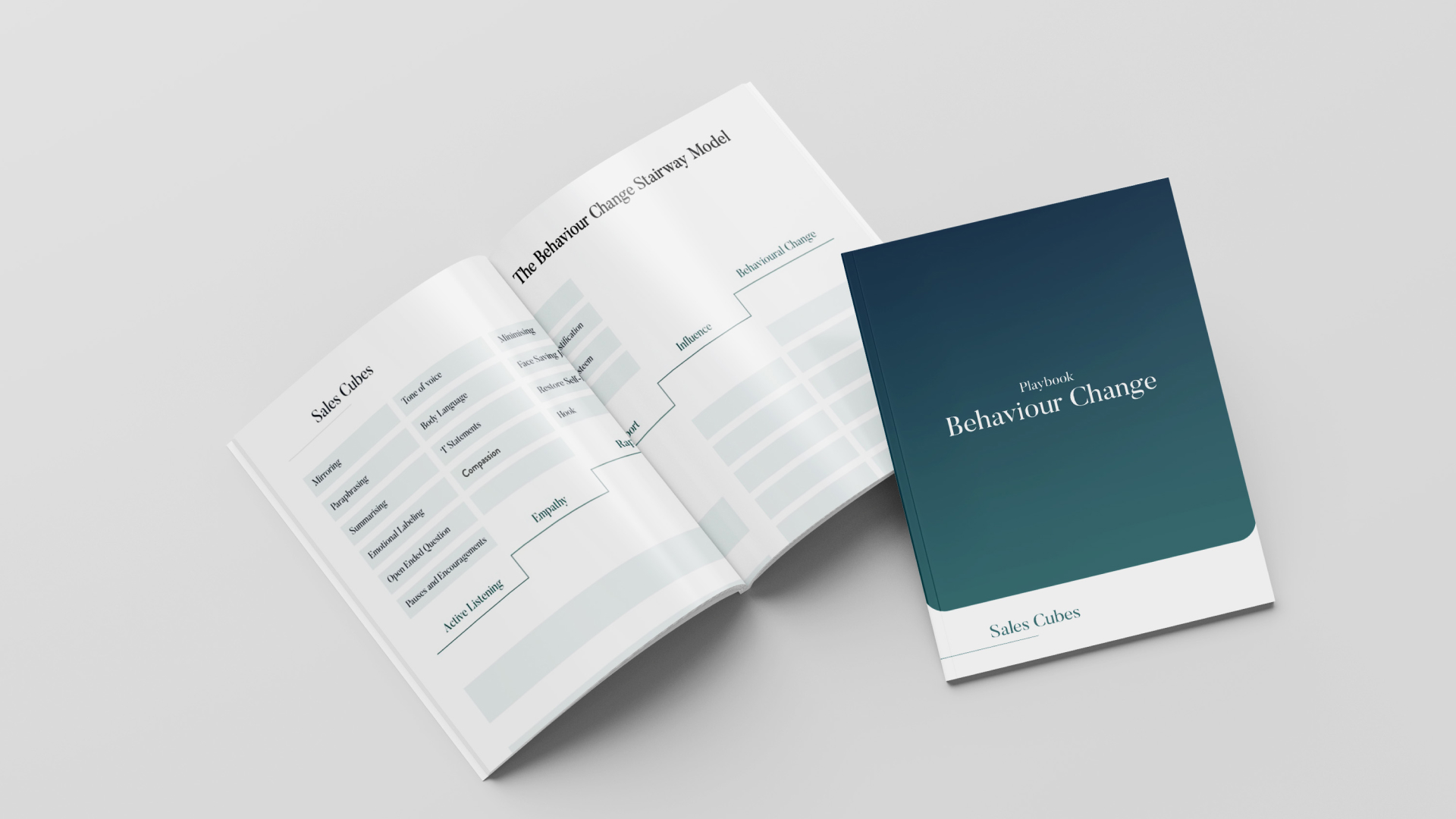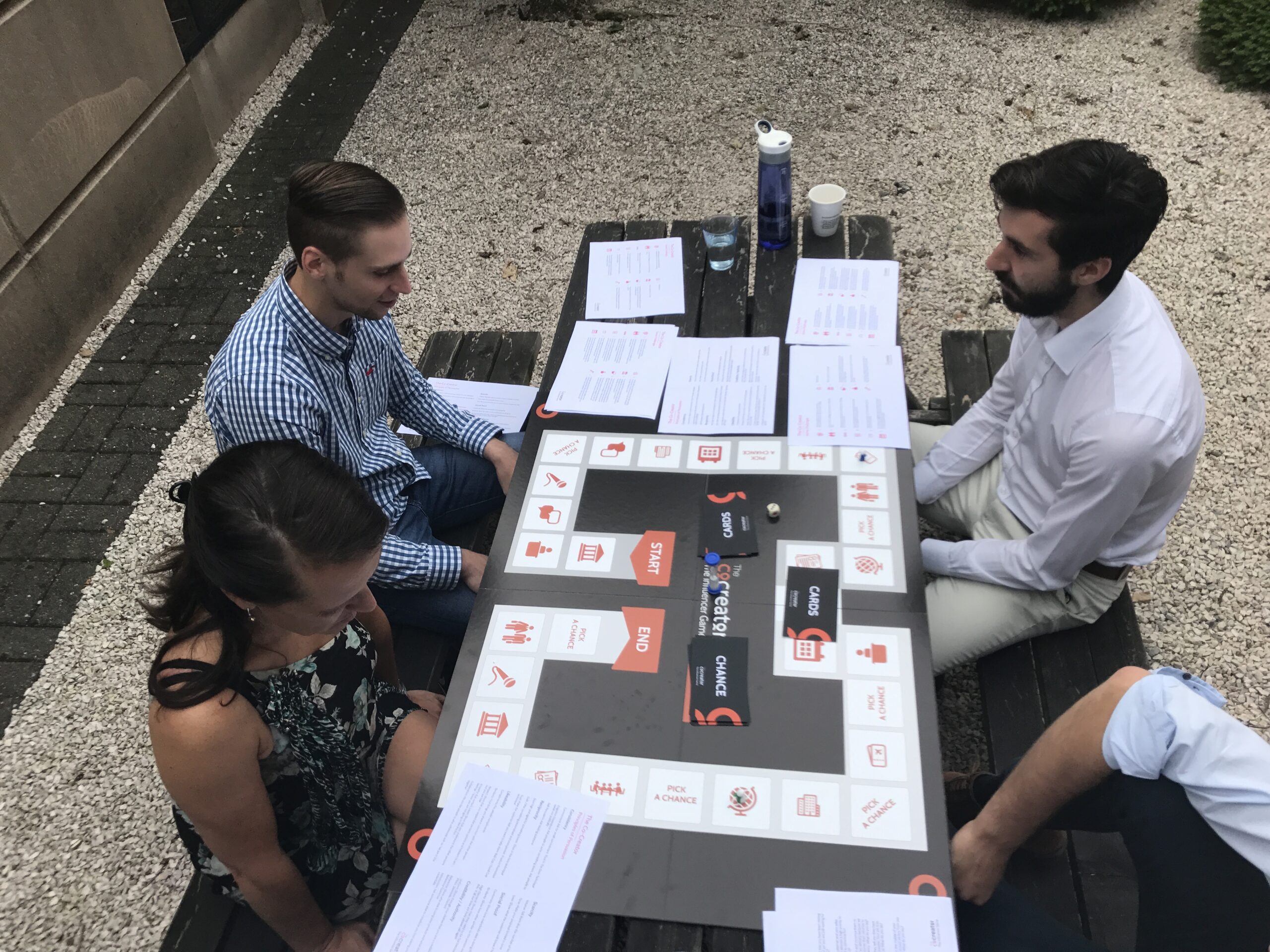What is it?
The Behaviour Change Stairway Model is a tool designed to encourage positive change in individuals. It operates as a step-by-step approach, guiding users through stages from building rapport to influencing a behaviour change. This model is particularly useful when coaching individuals who show some clear sign of resistance to the change that is being introduced.
Application
This model can be applied in various situations, such as:
-
- In High-Stakes Negotiations: Where reaching an agreement is crucial.
-
- In Managing Teams: To influence team dynamics positively.
-
- In Customer Relations: To understand and meet customer needs effectively.
Process:
Step 1: Active Listening
Listen to the other person’s point of view without judgment. This helps in building rapport and shows that you respect their perspective. It’s more than just hearing the spoken words; it’s about engaging with and comprehending the complete message being conveyed.
The most common activities in this stage include:
-
- Listening for Ideas and Feelings: Paying attention not just to the words but also to the emotions and intentions behind them.
-
- Paraphrasing and Reflecting: Summarising or paraphrasing what the client has said to confirm understanding.
-
- Open Question: Check whether you have all the information relevant to the matter at hand: what happened, what decisions were taken, what the aim is.
-
- Clarification: Ask clarification questions and encourage further explanation.
-
- Non-Verbal Communication: Show that you listen: Nod, Eye contact, Lower your tone of voice, mirror the person’s emotion to show your engagement.
For further information on which open questions to ask refer to the Calibrating Questions in this toolkit.
Step 2: Empathy
Demonstrate that you understand and share their feelings. Empathy builds trust and lowers resistance to change.
The most common activities in this stage include:
-
- Reflect Back: Use phrases like “It sounds like you’re feeling…” to show that you’re trying to understand their emotional state.
-
- Summarise: Use summarising ‘this is what I understood … ‘
-
- Validate Their Feelings: Say things like “That must be really tough” or “I can see why you’d feel that way.”
-
- Offer Support: Say things like ‘I am there for you..’, ‘How can I help you ?’
-
- Feel the Emotions: Show genuine interest in their feelings and experiences.
For further information on which emotions to identify ‘The Feeling Wheel‘ in this toolkit.
Step 3: Rapport
Use the understanding gained through active listening and empathy to build a connection. Rapport is the bridge to influence.
The most common activities in this stage include:
-
- Mutual Understanding: Show that you understand the client’s perspective and also ask that he/she understands yours. ( Attention: Understanding does not mean agreement!!)
-
- Climate of Trust: Can you make the challenges a shared challenge? Were are in it together? You are not alone.
-
- Create an Emotional Connection: Find common ground like values and beliefs, common vulnerabilities or any other similarities to establish a connection. Aim for mutual liking/amiability.
-
- Face-Saving Justification: Provide a way to a face-saving exit.
Step 4: Influence
Now that a relationship is established, you can begin to influence their behaviour. This is done by suggesting alternatives or solutions that align with their values and interests.
The most common activities in this stage include:
-
- Problems and Solution: Identify together the issues and how the address them.
-
- Goals and Expectations: Set clear and achievable goals and expectations.
-
- Highlight Benefits: Focus on how a change or action can benefit them personally or professionally.
-
- Appeal to Emotions: People are often more influenced by their emotions than by logic. Use storytelling or real-life examples that evoke emotions.
-
- Create Urgency: Create a sense of urgency, showing why they need to act now.
-
- Persuasion Techniques: Utilising principles of persuasion such as scarcity, authority, commitment, reciprocity, social proof, and liking.
-
- Provide Evidence: Use data, testimonials, case studies, or expert opinions to support your points.
-
- Framing and Reframing: Presenting information or a situation in a different way to change the individual’s perspective and open up new possibilities for solutions.
For further information on how to influence people consult the MINDSPACE Framework and The Behavioural Change Wheel in this toolkit.
Step 5: Behavioural Change
The final step is where the individual is ready to make a change. They have been listened to, understood, connected with, and influenced in a respectful and non-coercive manner.
The most common activities in this stage include:
-
- Identify and Discuss Obstacles: Openly discuss potential barriers and how they might be overcome.
-
- Empower: Reinforce the client’s ability to make the change, highlighting past successes or strengths.
-
- Make a Step-by-Step Plan: Break down the change into smaller, manageable steps to avoid overwhelm.
-
- Offer Support and Resources: Provide the necessary tools, resources, or support to help them make the change.
-
- Explore Ambivalence: Talk about their hesitations and help them resolve conflicting feelings about the change.
-
- Verbal or Written Commitment: Encourage the client to articulate their commitment verbally or in writing, which can increase the likelihood of follow-through.
Sources
- The mysteries of coaching and a model of behaviour change, The Open University
- G. Vecchi, V. Van Hasselt and S. Romano, 2003, Crisis Negotiation, current strategies and issues in high-risk conflict resolution, Aggression and Violent Behavior


